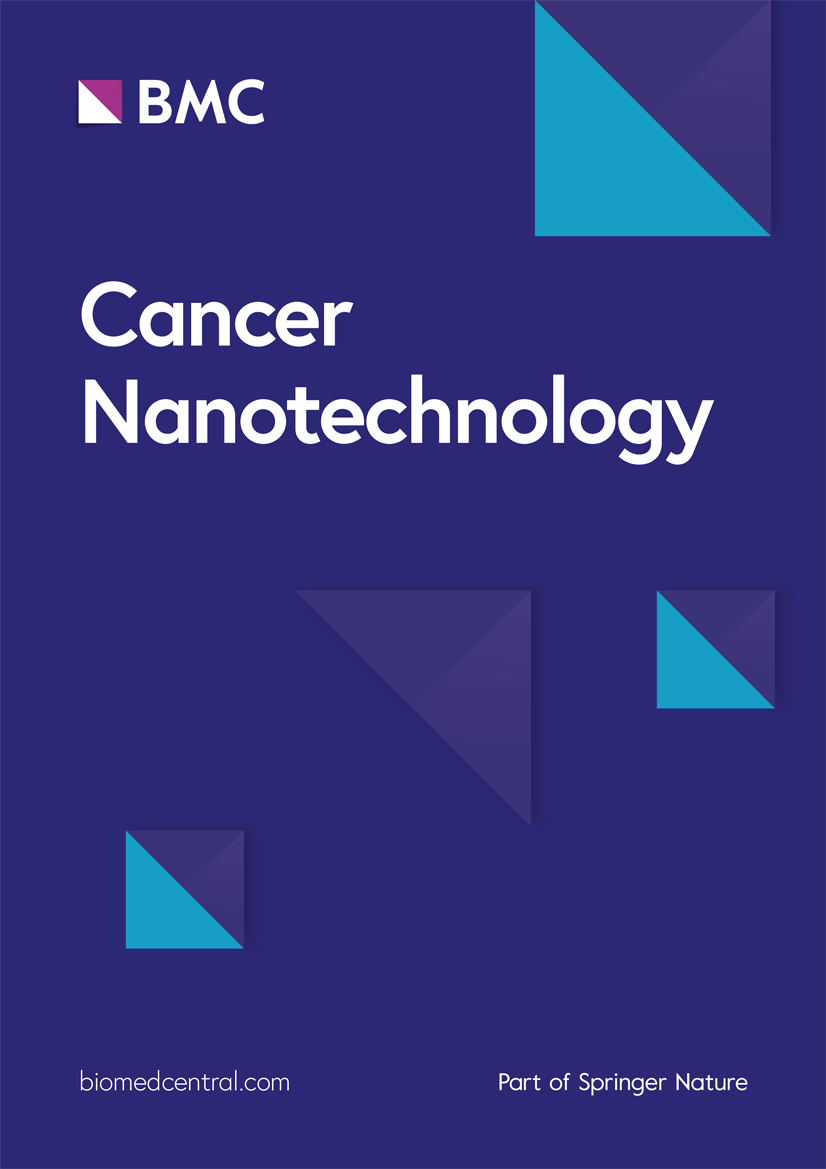Novel nanoparticle CS-C60-Fe3O4 magnetically induces tissue-specific aggregation and enhances thermal ablation of hepatocellular carcinoma
IF 4.8
2区 工程技术
Q2 NANOSCIENCE & NANOTECHNOLOGY
引用次数: 0
Abstract
Metallofullerenes are an important type of metallic nanomaterial with promising applications in several medical fields. Thermal ablation, including radiofrequency ablation (RFA) and microwave ablation (MWA), is an important treatment strategy for advanced hepatocellular carcinoma (HCC). The thermal expansion of fullerenes makes them good adjuncts to thermal ablation treatment of HCC. In this study, we used an innovative method of emulsification and cross-linking to produce CS-C60-Fe3O4 (Chitosan-C60-Fe3O4) nanoparticles, which have the advantages of uniform particle size and high bioavailability, as a kind of novel nano-pharmaceutical. The CS-C60-Fe3O4 nanoparticles were prepared by the cross-linking reaction from chitosan–acetic acid solution, Fe3O4 nanoparticles by Fe2SO4·7H2O and FeCl3·6H2O, and C60. The average particle size of CS-C60-Fe3O4 was 194.3 nm. Because CS-C60-Fe3O4 is magnetic, it can achieve specific and tissue aggregation in HCC tumor tissues. Moreover, compared with normal soluble C60 (EL35-C60), CS-C60-Fe3O4 prolonged the retention time of C60 in the blood of mice. CS-C60-Fe3O4 alone is not cytotoxic to cultured cells or tumor tissues, but when combined with thermal ablation strategies (RFA and MWA), it significantly upregulates the antitumor effects of thermal ablation on HCC tissues, that is, it acts as a sensitiser to thermal ablation. In the presence of thermal ablation, CS-C60-Fe3O4 interfered with iron metabolism in HCC cells and induced ferroptosis of HCC cells in the tumor tissues. These results not only expand our understanding of metallofullerenes but also provide additional options for the treatment of advanced HCC.新型纳米粒子 CS-C60-Fe3O4 磁性诱导组织特异性聚集并增强肝细胞癌的热消融能力
金属富勒烯是一种重要的金属纳米材料,在多个医疗领域有着广阔的应用前景。热消融,包括射频消融(RFA)和微波消融(MWA),是晚期肝细胞癌(HCC)的重要治疗策略。富勒烯的热膨胀特性使其成为热消融治疗 HCC 的良好辅助手段。在这项研究中,我们采用创新的乳化和交联方法制备了 CS-C60-Fe3O4(壳聚糖-C60-Fe3O4)纳米颗粒,它具有粒径均匀、生物利用度高等优点,是一种新型纳米药物。CS-C60-Fe3O4纳米粒子由壳聚糖-乙酸溶液、Fe2SO4-7H2O和FeCl3-6H2O制备的Fe3O4纳米粒子和C60通过交联反应制备而成。CS-C60-Fe3O4 的平均粒径为 194.3 nm。由于 CS-C60-Fe3O4 具有磁性,因此能在 HCC 肿瘤组织中实现特异性组织聚集。此外,与普通可溶性 C60(EL35-C60)相比,CS-C60-Fe3O4 延长了 C60 在小鼠血液中的保留时间。单独使用 CS-C60-Fe3O4 对培养细胞或肿瘤组织没有细胞毒性,但与热消融策略(RFA 和 MWA)结合使用时,它能显著提高热消融对 HCC 组织的抗肿瘤效果,即起到热消融增敏剂的作用。在热消融作用下,CS-C60-Fe3O4 能干扰 HCC 细胞的铁代谢,并诱导肿瘤组织中的 HCC 细胞发生铁突变。这些结果不仅拓展了我们对金属富勒烯的认识,还为晚期 HCC 的治疗提供了更多选择。
本文章由计算机程序翻译,如有差异,请以英文原文为准。
求助全文
约1分钟内获得全文
求助全文
来源期刊

Cancer Nanotechnology
Pharmacology, Toxicology and Pharmaceutics-Pharmaceutical Science
CiteScore
5.20
自引率
1.80%
发文量
37
审稿时长
15 weeks
期刊介绍:
Aim:
Recognizing cancer as a group of diseases caused by nanostructural problems (i.e. with DNA) and also that there are unique benefits to approaches inherently involving nanoscale structures and processes to treat the disease, the journal Cancer Nanotechnology aims to disseminate cutting edge research; to promote emerging trends in the use of nanostructures and the induction of nanoscale processes for the prevention, diagnosis, treatment of cancer; and to cover related ancillary areas.
Scope:
Articles describing original research in the use of nanostructures and the induction of nanoscale processes for the prevention, diagnosis and treatment of cancer (open submission process). Review, editorial and tutorial articles picking up on subthemes of emerging importance where nanostructures and the induction of nanoscale processes are used for the prevention, diagnosis and treatment of cancer.
 求助内容:
求助内容: 应助结果提醒方式:
应助结果提醒方式:


